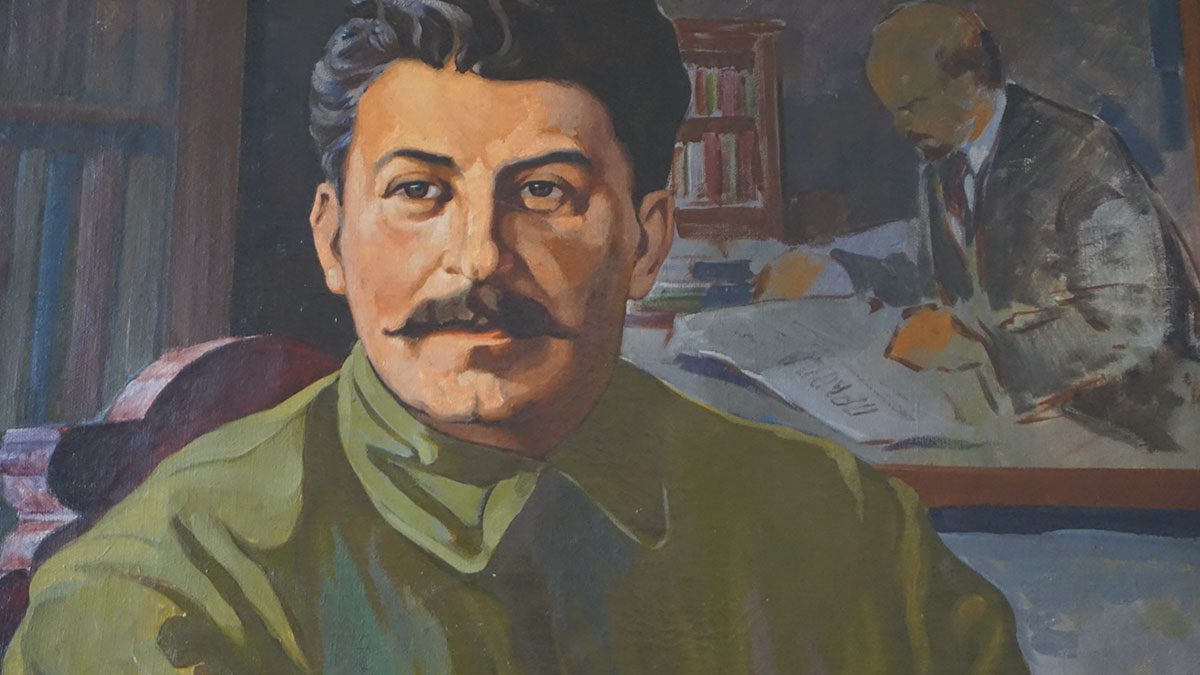Between 1948 and 1954 hundreds of thousands of people were arrested and interrogated, often under torture, by the secret police in the countries of the Soviet bloc in Eastern Europe. There were show trials and executions. The victims were members of the ruling ‘communist’ parties, including quite a few in prominent positions. In Czechoslovakia alone nearly 170,000 party members were arrested, almost causing the economy to collapse.
Stalin himself presided over these purges. After Tito’s Yugoslavia broke away from the bloc, he feared that the ‘Titoist’ contagion would spread and other countries would follow Yugoslavia’s example. He was also determined to destroy ‘fifth columns’ in preparation for a possible war with the Western powers.
However, as George Hodos, a rare survivor of the Rajk trials in Hungary, stresses in his book Show Trials: Stalinist Purges in Eastern Europe (Praeger 1987), most victims were actually loyal Stalinists. Only a few, such as Gomulka in Poland, really had ‘Titoist’ tendencies. If this point is accepted, an explanation of the vast scale of the purges has to rely on a single factor – Stalin’s well-known paranoia.
Or was that paranoia perhaps deliberately exploited by an outside player? Is it possible that while Stalin presided over the purges someone else actually started them? After all, it would not have been the first such provocation. It was disinformation spread by agents of Nazi Germany that triggered Stalin’s disastrous purge of the Red Army’s officer corps in 1937. Could Western secret services have played a similar game at the end of the 1940s?
I first came across this idea in Jo Langer’s memoir Convictions: Memories of a life shared with a good communist (Andre Deutsch, 1979). The ‘good communist’ to whom the author was married was Oscar Langer, who worked as an economist for the Central Committee in postwar Czechoslovakia. The illustration shows the book cover with a photo of the couple. As the purge gathered pace, Oscar tried to warn ‘his friends in the inner circles’ of the harm it was doing:
He hinted at the possibility that the class enemy himself found a field of activity in the very heart of the organization created as a shield. In that case the real saboteurs were those who were arresting good men in key positions to wreck the economy and thereby undermine the confidence of the masses.
Jo Langer
Langer’s warnings fell on deaf ears. He himself was arrested in August 1951 and not released until 1961. He died shortly thereafter.
When I read this I thought it was a clever argument to use, but did not take it very seriously. Recently, however, I read David Talbot’s in-depth personal and political biography of Allen Dulles, who headed the Central Intelligence Agency from 1952 to 1961 and continued to influence its personnel even after his resignation (The Devil’s Chessboard: Allen Dulles, the CIA, and the Rise of America’s Secret Government, HarperCollins Publishers, 2015). Talbot reveals that Langer’s suspicions were fully justified.
Operation Splinter Factor
The CIA’s Operation Splinter Factor began in 1949 when Noel Field, a Quaker relief worker whom Dulles had known during the war, was offered a university teaching position in Prague. He went to Czechoslovakia. Time passed and nothing was heard from him. So his worried wife Herta and brother Hermann went looking for him. They too vanished. In 1950 the Fields’ adoptive daughter, Erica Glaser Wallach, went to make inquiries about them at party headquarters in East Berlin. She vanished in her turn.
All four had been arrested. Their interrogators demanded to know what connection they had with Allen Dulles and what mission he had given them. They could make no sense of the questions. Unbeknownst to them, the CIA had instructed a double agent high up in the Polish security service to spread the word that Dulles had sent them on secret missions to recruit old acquaintances into a pro-Western spy network.
The ploy worked beyond the CIA’s wildest dreams. Dulles’ colleague Frank Wisner gleefully reported:
The comrades are merrily sticking knives in each others’ backs and doing our dirty work for us.
Talbot
The ‘dirty work’ was to weaken ‘communism’ by sowing suspicion and disarray into the party ranks.
In 1954, after Stalin’s death, Soviet and East European secret police officials realized that they had been tricked. They apologized to the Fields and sent them home.
Dulles viewed the naïve people whom he manipulated with withering contempt. He once confided to his sex-partner Mary Bancroft:
I like to watch the little mice sniffing at the cheese just before they venture into the little trap. I like to see their expressions when it snaps shut, breaking their little necks.
Talbot
No doubt Stalin and Beria indulged in similar pleasurable feelings.
‘Communism’ and ‘Anti-communism’
The CIA’s ‘dirty work’ was done in the name of the fight against ‘communism.’ For Dulles, as for Lenin and all his successors, supposedly noble ends justified all and any means.
But what was ‘communism’? What were the key features that made it odious? What ideals inspired its enemies? Which developments within ‘communism’ and in its relations with the outside world were to be regarded as positive and which as negative?
Once we inquire into these questions, we quickly discover concepts of ‘communism’ and ‘anti-communism’ that do not just diverge from but sharply conflict with one another. In particular, we find a chasm between the concepts that actually guide secret agents like Dulles and the concepts that those same agents use in propaganda for the general public.
In the propaganda the key features that make ‘communism’ odious are the arbitrary power of a dictator or narrow ruling group and the denial of freedom (of speech, association, religion, travel, etc.). The propaganda therefore equates ‘anti-communism’ is with democracy, human rights, and the rule of law.
This contrast is a superficially plausible — but only if we confine our focus to Europe since 1945, overlooking the experience of fascism as well as such episodes as the ‘regime of the colonels’ in Greece (1967–74). Once we turn our gaze to other parts of the world, we find numerous instances of the CIA overthrowing democracies and replacing them with military or royal dictatorships. Dulles and his cronies soon graduated from playing with ‘mice’ in Eastern Europe to overthrowing the democratically elected governments of Mossadegh in Iran (1953), Arbenz in Guatemala (1954), and Lumumba in the Democratic Republic of the Congo (1960) – all three operations described in detail by Talbot. Later it would be the turn of many other countries, including Brazil (1964), Indonesia (1965), Ghana (1966), Chile (1973), and Haiti (2004).
For capitalist functionaries like Dulles, the key feature that makes ‘communism’ hateful is its disrespect for the property rights of the wealthy, especially when Americans are affected. This is the sole issue they really care about. That is why they lump together all advocates of dispossessing the wealthy as ‘radical’ or ‘extreme’ leftists, ignoring the huge differences with regard to the kind of new society to be created. Any future in which they themselves no longer occupy a privileged position is of no interest to them.
Thus, in contrast to the ‘mice’ with their naive belief in democracy and human rights, CIA agents did not welcome the prospect of greater autonomy for the countries of Eastern Europe or de-Stalinization in general. Nor would they welcome Dubcek’s ‘socialism with a human face’ or Gorbachev’s perestroika and ‘new political thinking.’ As Talbot notes, they took a negative view of any development that might have made ‘communism’ less unpopular and therefore stronger and more stable. In practice, they aligned themselves with the Stalinists.
Conclusion
That the CIA played a significant role in the Stalinist purges in Eastern Europe seems to me beyond reasonable doubt, even though we are not – and never may be — in a position to assess just how significant, due to the paucity of accessible sources. It is unfortunate that Erica Wallach’s memoir (Light at Midnight, Doubleday 1967) is almost out of print.
Unfortunately, Operation Splinter Factor has not been incorporated into standard historical accounts of the period. Few specialists in the history of Eastern Europe are also familiar with the history of the CIA. Anyway, it is not exactly ‘respectable’ for an academic historian to drag dirty secrets of Western intelligence into the light of day.
So anyone who values historical truth owes a great debt to David Talbot.



